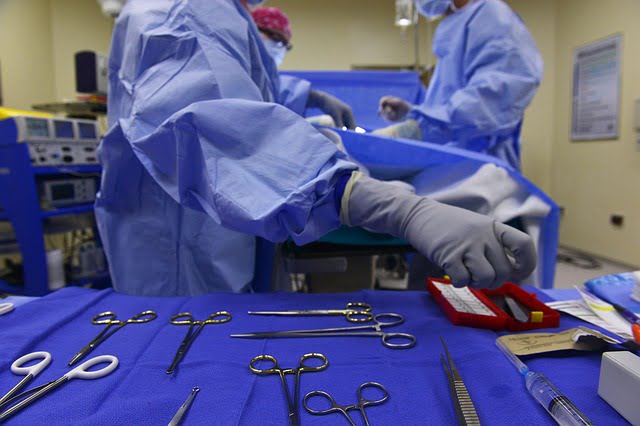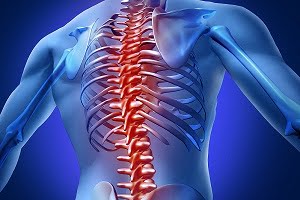What is bone cancer?
Bone cancer is an uncommon cancer that occurs in the bones. Bone cancer can occur in any bone in the body, but it most commonly affects the long bones such as those of the arms and legs.
The term ‘bone cancer’ is not used for cancers that begin somewhere else in the body and spread (metastasize) to the bone from there. They are termed by the name of the organ that they start from. In fact, when cancer is detected in bone, most often it has started in some other organ or somewhere else and then spread to the bones.
Breast, prostate, and lung cancers are some types of cancers that commonly metastasize to the bone in advanced stages. It is very uncommon for a cancer to begin within the bone as primary bone cancer, but this is the true bone cancer.
There are some cancers that may start in the bone even though they are not considered to be true bone cancers. Here are a few examples:
- Lymphoma: Lymphoma is a cancer of the immune cells of the body. In most cases, lymphoma begins in the lymph nodes, but it sometimes start in the bone marrow.
- Multiple myeloma: It is another cancer of the immune cells and generally begins in the bone marrow.
These cancers are not considered primary bone cancers though they begin in bones, because they do not develop from the actual bone cells.
Types of bone cancer
The main types of bone cancer are:
- Osteosarcoma – it is the most common type of bone cancer, and mostly affects children and young adults under 20 years in age
- Ewing sarcoma – it affects people aged between 10 and 20 mostly
- Chondrosarcoma – it affects adults aged over 40
Signs and symptoms of bone cancer
Common bone cancer symptoms are:
Pain
Pain in the affected bone is the most common sign of bone cancer. The pain is not constant in the beginning. It may get worse at night or when the body part containing the bone is in motion. As the cancer advances, the pain will remain all the time. The pain increases with activity.
Swelling and Lumps
Swelling in the affected area may not occur until a few weeks later. A person may feel a lump in the location of the cancer or tumor.
If the cancer occurs in the bones of the neck, the patient can feel a lump in the back of the throat. This can cause trouble in swallowing or make it harder to breathe.
Fractures
Bone cancer can make your bones weakened. While most of the time the bones do not fracture (break), but fracture can be a sign of bone cancer. If it is due to bone cancer, there will be a sudden severe pain in the limb.
Other symptoms
- Bone cancer can press nerves leading to numbness or tingling
- Weight loss
- Fatigue
- If the cancer spreads to other organs, it may cause other symptoms too
- Although it is not common, the patient might also experience conditions such as fever, chills, and night sweats
Causes of bone cancer
It is not exactly known what causes bone cancer. It is believed that patients with long-term inflammatory diseases are at a significantly higher risk of developing bone cancer. But, it is not clear why one person gets bone cancer while another one does not.
Doctors believe that bone cancer begins as a problem in a cell’s DNA. This causes the cell to grow and divide in an uncontrolled way. The uncontrolled growth of the mutated cells forms a mass (tumor) that can attack nearby tissues or bones or spread to other areas of the body.
What are the risk factors for bone cancer?
About 2500 cases of bone cancer are diagnosed in the U.S. every year. Primary bone cancers are not common and account for less than 1% of all cancers. Bone cancers are more common in children and younger adults than in older people.
The following groups of people are at increased risk of cancer of the bones:
- Most cases of bone cancer occurs in children or young adults
- Radiotherapy can also cause bone cancer as its side effect
- History of Paget’s disease
- Family history of bone cancer
- People who develop hereditary retinoblastoma (it is a type of eye cancer that generally affects very young children)
- History of Li-Fraumeni syndrome
- Implantation of metal objects in the body to repair fractures
- Previous chemotherapy with drugs known as alkylating agents
- Currently or in past having had tumors in the cartilage – which is the connective tissue in the bone
Diagnosing Bone Cancer (Testing the stage and extent of the bone cancer)
Doctors classify primary bone cancer in different stages. These stages identify where the cancer is located, what is happening here, and how much it has spread to other parts of the body.
- Stage 1 bone cancer: bone cancer hasn’t spread from the bone
- Stage 2 bone cancer: bone cancer hasn’t spread but may become invasive to other tissue
- Stage 3 bone cancer: bone cancer has spread to one or more other locations of the bone and is invasive
- Stage 4 bone cancer: bone cancer has spread to the tissues surrounding the bone and to other organs such as the lungs or brain etc
Your doctor may use one or more of the following methods to determine the stage of cancers in the bones:
- Bone scan
- Computerized tomography (CT) scan
- Magnetic resonance imaging (MRI)
- Positron emission tomography (PET)
- X-ray imaging
- Blood test
Biopsy for diagnosing bone cancer
Your doctor may ask for biopsy that involves removal of a sample of tissue from the tumor for laboratory testing. Testing tells your doctor whether the tissue is cancerous and, if so, what type of cancer is it. Testing also reveals the grade of the cancer, which tells how aggressive the cancer may be.
Bone cancer treatment
The treatment of bone cancer depends on the type of cancer you have, the stage of the cancer, your overall health and your preferences of the treatment options.
Different bone cancers respond to different treatments differently. For example, some bone cancers can be treated with surgery only, other are treated with surgery and chemotherapy, and some may even require radiation therapy, and so on.
Surgery for bone cancer treatment
Your doctor may remove the cancerous tissue surgically. Surgery is usually the preferred option to stop cancers that spread fast. If the bone damage is extensive in the arms or legs, amputation may be needed.
Surgery may be done in many ways:
- Surgery to remove the cancer without removing the limb
- Surgery to remove the limb
- Surgery for the cancer that doesn’t affect the limbs
Radiation therapy
Radiation therapy involves high-powered beams of energy, such as X-rays that are used to kill cancer cells. You are asked to lie on a table and a radiation machine moves around you to focus the energy beams on target points of the body.
Radiation therapy is generally delivered along with chemotherapy. Sometimes, it is used before an operation. This may increase the chance of not amputing an organ.
Chemotherapy
Chemotherapy is a drug treatment that involves delivery of chemicals to kill cancer cells. Chemotherapy is generally delivered through a vein.
Chemotherapy may also be delivered in people with bone cancer that has metastasized to other areas of the body.
The objective of chemotherapy is:
- to treat the condition (sometimes, only chemotherapy can cure the cancer completely)
- chemotherapy can help other therapies, such as radiotherapy or surgery, to produce better outcomes
- to prevent the return of cancer after a tumor has been removed surgically
- to slow down the progression of cancer
Medications
- pain medications to relieve inflammation and pain
- bisphosphonates to help prevent bone loss and protect bone structure
- cytotoxic drugs to stop the growth of cancerous cells
- drugs during chemotherapy
Alternative Therapy
Your doctor may suggest alternative therapies (natural therapies for bone cancer) that may include herbal treatments along with your regular medical treatment.
However, this must be recommended with care as certain alternative treatments may interfere with chemotherapy and radiation therapy.






